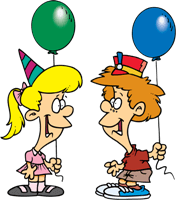The Verb To Be: Forms, Examples and Grammar Exercises
Table
| Meanings
| Auxiliary
Verb |Passive
Progressive Forms | Perfect Forms | Exercises | Online Course
Progressive Forms | Perfect Forms | Exercises | Online Course
The verb "to be" is one of the most common verbs in the English language. It has many different forms.
Click Here for Step-by-Step Rules, Stories and Exercises to Practice All English Tenses
The forms of the verb "to be"
| When? | Who? | Form | Example |
| Base form | be | It can be simple. | |
| Simple Present | I | am | I am here. |
| You | are | You are here. | |
| He/She/It | is | She is here. | |
| We | are | We are here. | |
| They | are | They are here. | |
| Simple Past | I | was | I was here. |
| You | were | You were here. | |
| He/She/It | was | She was here. | |
| We | were | We were here. | |
| They | were | They were here. | |
| Simple Future | I | will be | I will be here. |
| You | will be | You will be here. | |
| He/She/It | will be | She will be here. | |
| We | will be | We will be here. | |
| They | will be | They will be here. | |
| Progressive form | being | He is being unusual. | |
| Perfect from | been | It has been fun. |
The verb "to be" also has many different meanings.
The following are the most important ones.
The meanings of the verb "to be"
1. Exists.
There is
a rabbit inside.

There is nothing in the fridge.

There is a problem...

There is a difference.


There is nothing in the fridge.

There is a problem...

There is a difference.

2. Happens.
The party is
tonight.

The meeting is down the hall.

Come, it is over there.


The meeting is down the hall.

Come, it is over there.

3. Located.
She is
at school.

She is home.

The food is on the table.


She is home.

The food is on the table.

4. Shows identity.
She is
Alexis and this is Bob.

He is a singer.

He is not a singer.


He is a singer.

He is not a singer.

5. Shows a quality.
She is
beautiful.

It is stinky.

This is dangerous.


It is stinky.

This is dangerous.

The verb "to be" as an auxiliary
verb
(helping verb)
Auxiliary verbs are verbs that are used together with the main
verb of the sentence to express the action or state. Main verb + auxiliary verb = complete idea
The verb "to be" can be used as an auxiliary verb to express ongoing (continuing) actions.
For example:
Anna is eating a sandwich.
"Eating" = the main verb.
"Is" = an auxiliary (helping) verb.
"is eating" (a complete idea) = the eating is IN PROGRESS.
More examples:
Kayla is walking home with her friends.
Justin and Ethan are watching a movie.
I am trying to get some sleep.
The verb "to be" in passive sentences
The verb "to be" is used together with the third form of the verb
(V3) in passive sentences.For example:
ACTIVE: I eat an apple.
PASSIVE: The apple is eaten.
"Eaten" = the main verb (in the third form – V3).
"Is" = an auxiliary (helping) verb.
"is eaten" (a complete idea) = the subject of the sentence (the apple) is affected by the action.
More examples:
People buy cars. --> Cars are bought.
Someone turned on the light. --> The light was turned on.
He will clean the house. --> The house will be cleaned.
Progressive Forms of the verb "to be"
The progressive form of the verb "to be" is "being."This means the action is ongoing (continuing).
Examples:
The little boy is being naughty.
She was being rude, but then she apologized.
They are being tricked.
Perfect Forms of the verb "to be"
The perfect form of the verb
"to be" is "been."This means the action is complete (finished).
Examples:
The little boy has been naughty.
She has been rude, but now she apologizes.
They have been tricked.
Grammar Exercises
Exercise
01Exercise 02
Verb
TO BE Worksheet: A Fun Way to Practice
Download your FREE GIFT (the first two chapters of

Get Updates, Special Offers, and English Resources
Download your FREE GIFT (the first two chapters of
English Short Stories Book and Workbook)
as soon as you join!

By submitting your email, you consent to receiving updates and newsletters from us and to the sharing of your personal data with third parties for the purposes of sending you communications. We will not spam you. You can unsubscribe at any time. For more information, please see our privacy policy.





